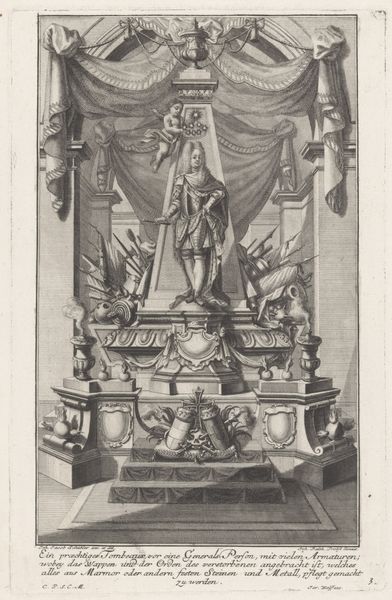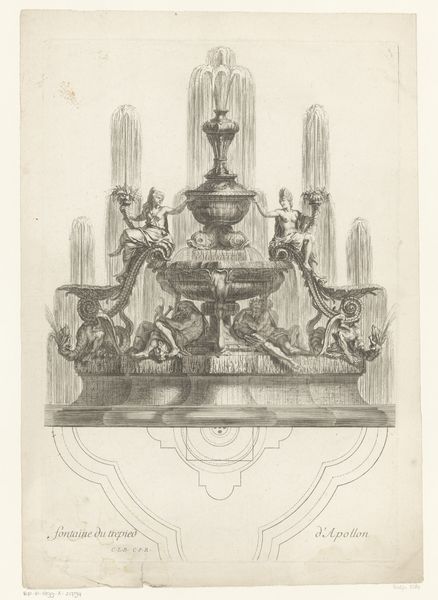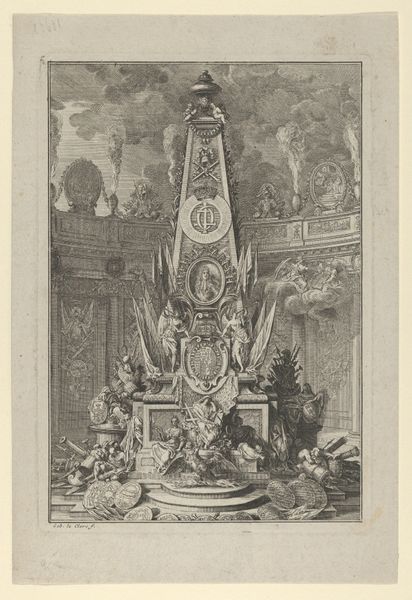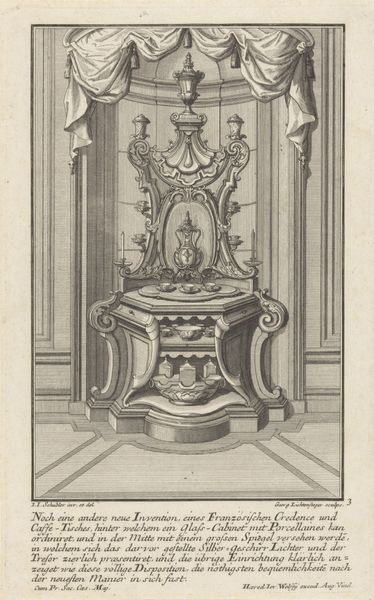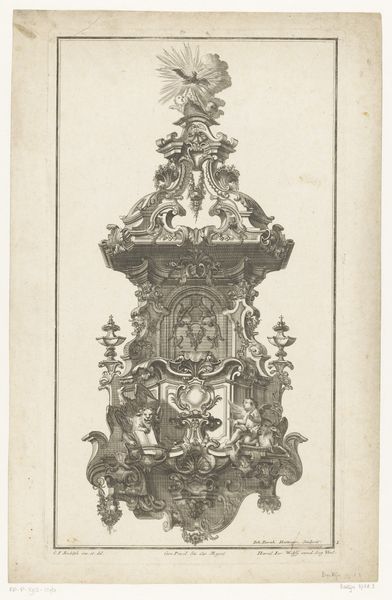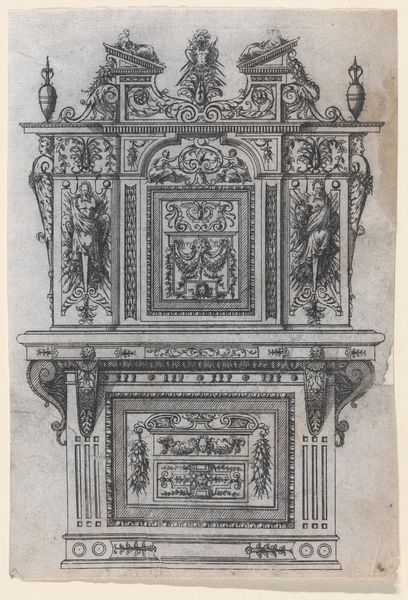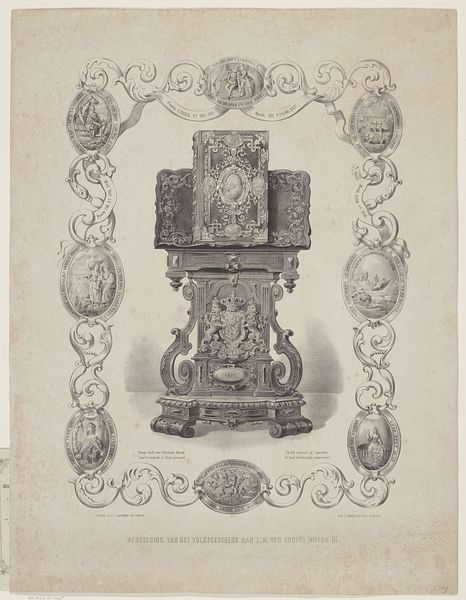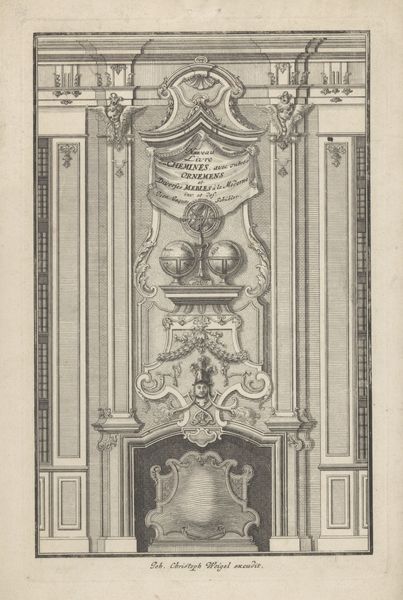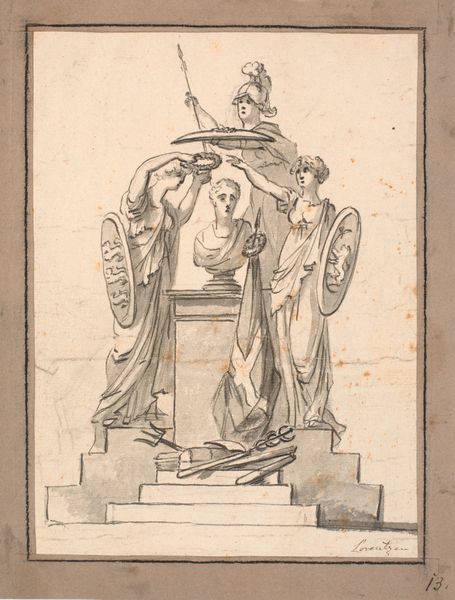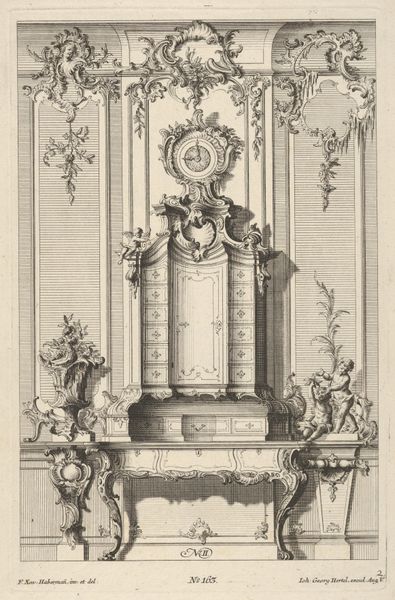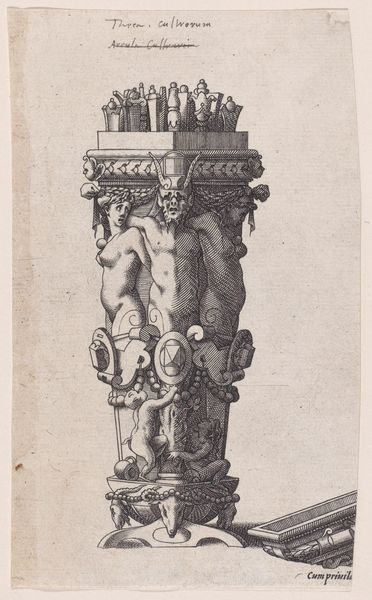
Speculum Romanae Magnificentiae: Pegasus capital from the Temple of Mars Ultor and decorated base 1534 - 1540
0:00
0:00
drawing, print, engraving, architecture
#
drawing
# print
#
classical-realism
#
form
#
11_renaissance
#
geometric
#
line
#
history-painting
#
engraving
#
architecture
Dimensions: sheet: 11 1/4 x 7 11/16 in. (28.5 x 19.5 cm) mount: 13 11/16 x 12 5/16 in. (34.7 x 31.3 cm)
Copyright: Public Domain
This print, made around 1535 by Monogrammist G.A. & the Caltrop, depicts a Pegasus capital from the Temple of Mars Ultor and decorated base. It's made using the intaglio printmaking process, where the image is incised into a metal plate, inked, and then pressed onto paper. The material qualities of the print—the fineness of the lines, the contrast between light and shadow—result from the engraver's skillful manipulation of tools. Each line represents a deliberate cut into the metal. This level of detail speaks to the intense labor involved in creating this image. The print belongs to a larger series, "Speculum Romanae Magnificentiae," which aimed to document and celebrate the grandeur of ancient Roman architecture. In a time before photography, prints like these played a vital role in disseminating knowledge and shaping perceptions of classical antiquity. Considering the material, the making, and the context helps us understand the full significance of the artwork, blurring the lines between fine art, craft, and documentation.
Comments
No comments
Be the first to comment and join the conversation on the ultimate creative platform.
